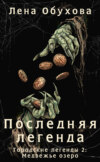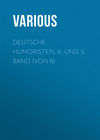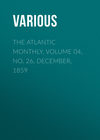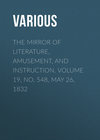Читать книгу: «The Mirror of Literature, Amusement, and Instruction. Volume 13, No. 369, May 9, 1829», страница 2
CAT AND FIDDLE
(To the Editor of the Mirror.)
Your correspondent, double X has furnished us with a well written and whimsical derivation of the above ale-house sign, and partly by Roman patriotism and French "lingo," he traces it up to "l'hostelle du Caton fidelle." But I presume the article is throughout intended for pure banter—as I do not consider your facetious friend seriously meant that "no two objects in the world have less to do with each other than a cat and violin."
How close the connexion is between fiddle and cat-gut, seems pretty well evident—for a proof, I therefore refer double X to any cat-gut scraper in his majesty's dominions, from the theatres royal, to Mistress Morgan's two-penny hop at Greenwich Fair.
JACOBUS.
THE ROUE'S INTERPRETATION OF DEATH
(For the Mirror.)
"Death! who would think that five simple letters, would produce a word with so much terror in it."—The Rou.
Death! and why should it be
That hideous mystery
Is with those atoms integral combin'd?
Alas! too well—too well,
I've prob'd unto the spell
In each dark imag'd sound, that lurks entwin'd!
Eternity, implied
In Death, and long denied
Now sacrifices my tortur'd menial gaze!
Whilst, with its lurid light
Heart-burnings fierce unite
And what may quench, the guilty spirit's blaze?
Annihilation!—this,
Was once, the startling bliss
I forc'd my soul to fancy Death should give!
But, whilst I shudd'ring bless
The hopes—of—nothingness,
A something sighs: "Beyond the grave I live!"
Tophet! I thrill! for scorn'd
Was the sere thought, though warn'd
Ofttimes that Death, enclos'd that dread abyss!
Now, by each burning vein
And venom'd conscience—pain
I know the terrors of that world, in this!
Heaven! ay, 'tis in Death
For him, whose fragile breath
Wends from a breast of piety and peace,
But darkness, chains, and dree
Eternal, are for me
Since Death's tremendous myst'ries never cease!
M.L.B.
TO JUDY
(For the Mirror.)
I have thought of you much since we parted,
And wished for you every day,
And often the sad tear has started,
And often I've brush'd it away;
When the thought of thy sweet smile come o'er me
Like a sunbeam the tempest between,
And the hope of thy love shone before me
So brilliantly bright and serene,
I remember thy last vow that made me
Forget all my sorrow and care,
And I think of the dear voice that bade me
Awake from the dream of despair.
I regard not the gay scene around me,
The smiles of the young and the free,
Have not now the soft charm that once bound me.
For that hath been broken by thee;
And tho' voices, dear voices are teeming,
With friendship and gladness, and wit,
And a welcome from bright eyes is beaming,
I cannot, I cannot, forget—
I may join in the dance and the song,
And laugh with the witty and gay,
Yet the heart and best feelings that throng
Around it, are far, far away.
Dost remember the scene we last traced, love,
When the smile from night's radiant queen
Beamed bright o'er the valley, and chased love
The spirit of gloom from the scene?
And the riv'let how heedless it rushed, love,
From its home in the mountain away,
And the wild rose how faintly it blush'd, love,
In the light of the moon's silver ray:
Oh, that streamlet was like unto me,
Parting from whence its brightness first sprung,
And that sweet rose was the emblem of thee,
As so pale on my bosom you hung.
Dearest, why did I leave thee behind me,
Oh! why did I leave thee at all,
Ev'ry day that dawns, only can find me
In sorrow, and tho' the sweet thrall
Of my heart serves to cheer and to check me
When sorrow or passion have sway,
Yet I'd rather have thee to hen-peck1 me,
Than be from thy bower away;
And, dear Judy, I'm still what you found me,
When we met in the grove by the rill,
I forget not the spell that first bound me,
And I shall not, till feeling be still.
F. BERINGTON.
ANCIENT PLACES OF SANCTUARY IN LONDON AND WESTMINSTER
"No place indeed should murder sanctuarise."
SHAKSPEARE.
The principal sanctuaries were those in the neighbourhood of Fleet-street, Salisbury-court, White Friars, Ram-alley, and Mitre-court; Fulwood's-rents, in Holborn, Baldwin's-gardens, in Gray's-inn-lane; the Savoy, in the Strand; Montague-close, Deadman's-place, the Clink, the Mint, and Westminster. The sanctuary in the latter place was a structure of immense strength. Dr. Stutely, who wrote about the year 1724, saw it standing, and says that it was with very great difficulty that it was demolished. The church belonging to it was in the shape of a cross, and double, one being built over the other. It is supposed to have been built by Edward the Confessor. Within this sanctuary was born Edward V., and here his unhappy mother took refuge with her son, the young Duke of York, to secure him from the villanous proceedings of his cruel uncle, the Duke of Gloucester, who had possession of his elder brother. The metropolis at one time (says the Rev. Joseph Nightingale,) abounded with these haunts of villany and wretchedness. They were originally instituted for the most humane and pious purposes; and owe their origin to one of the sacred institutions of the Mosaic law, which appointed certain cities of refuge for persons who had accidentally slain any of their fellow creatures. The institution, as Marmonides justly observes, was a merciful provision both for the manslayer, that he might be preserved, and for the avenger, that his blood might be cooled by the removal of the manslayer out of his sight. In the year 1487, during the Pontificate of Innocent VIII. a bull was issued, and sent here, to lay a little restraint on the privileges of sanctuary. It stated, that if thieves, murderers, or robbers, registered as sanctuary-men, should sally out and commit fresh nuisances, which they frequently did, and enter again, in such cases they might be taken out of their sanctuaries by the king's officers. That as for debtors, who had taken sanctuary to defraud their creditors, their persons only should be protected; but their goods out of sanctuary, should be liable to seizure. As for traitors, the king was allowed to appoint them keepers in their sanctuaries, to prevent their escape. After the Reformation had gained strength, these places of sanctuary began to sink into contempt, and in the year 1697, it became absolutely necessary to take some legislative measures for their destruction.
P.T.W.
TRUE PHILOSOPHY
A footman who had been found guilty of murdering his fellow-servant, was engaged in writing his confession: "I murd—" he stopped, and asked, "How do you spell murdered?"
THE SELECTOR AND LITERARY NOTICES OF NEW WORKS
TIMBER TREES
In the last volume of the MIRROR, we gave several extracts from a delightful paper on Landscape Gardening, contained in a recent Number of the Quarterly Review; with an abstract of Sir Henry Steuart's new method of transplanting trees, and a variety of information on this interesting department of rural economy. We are therefore pleased to see that the Society for the diffusion of Useful Knowledge, have appropriated the second part of their new work to what are termed "Timber Trees and their applications;" and probably few of their announced volumes will exceed in usefulness and entertainment that which is now before us. Indeed, the Editor could scarcely have devised a more successful means of impressing his readers with a sincere love of nature and her sublime works, than by introducing them to the history of vegetable substances in their connexion with the useful arts.
We subjoin a few specimens, with occasional notes, arising from our own reading and personal observation.
Picturesque Beauty of the Oak
A fine oak is one of the most picturesque of Trees. It conveys to the mind associations of strength and duration, which are very impressive. The oak stands up against the blast, and does not take, like other trees, a twisted form from the action of the winds. Except the cedar of Lebanon, no tree is so remarkable for the stoutness of its limbs: they do not exactly spring from the trunk, but divide from it; and thus it is sometimes difficult to know which is stem and which is branch. The twisted branches of the oak, too, add greatly to its beauty; and the horizontal direction of its boughs, spreading over a large surface, completes the idea of its sovereignty over all the trees of the forest. Even a decayed oak,—
"–dry and dead,
Still clad with reliques of its trophies old,
Lifting to heaven its aged hoary head,
Whose foot on earth Hath got but feeble hold—"
—even such a tree as Spenser has thus described is strikingly beautiful: decay in this case looks pleasing. To such an oak Lucan compared Pompey in his declining state.
The Cedar
The cedar of Lebanon, though it has been introduced into many parts of England as an ornamental tree, and has thriven well, has not yet been planted in great numbers for the sake of its timber. No doubt it is more difficult to rear, and requires a far richer soil than the pine and the larch; but the principal objection to it has been the supposed slowness of its growth, although that does not appear to be very much greater than in the oak. Some cedars, which have been planted in a soil well adapted to them, at Lord Carnarvon's, at Highclere, have grown with extraordinary rapidity. Of the cedars planted in the royal garden at Chelsea, in 1683, two had, in eighty-three years, acquired a circumference of more than twelve feet, at two feet from the ground, while their branches increased over a circular space forty feet in diameter. Seven-and-twenty years afterwards the trunk of the largest one had extended more than half a foot in circumference; which is probably more than most oaks of a similar age would do during an equal period. The surface soil in which the Chelsea cedars throve so well is not by any means rich; but they seem to have been greatly nourished from a neighbouring pond, upon the filling up of which they wasted away.
Various specimens of the cedar of Lebanon are mentioned as having attained a very great size in England. One planted by Dr. Uvedale, in the garden of the manor-house at Enfield, about the middle of the seventeenth century, had a girth of fourteen feet in 1789; eight feet of the top of it had been blown down by the great hurricane in 1703, but still it was forty feet in height. At Whitton, in Middlesex, a remarkable cedar was blown down in 1779. It had attained the height of seventy feet; the branches covered an area one hundred feet in diameter; the trunk was sixteen feet in circumference at seven feet from the ground, and twenty-one feet at the insertion of the great branches twelve feet above the surface. There were about ten principal branches or limbs, and their average circumference was twelve feet. About the age and planter of this immense tree its historians are not agreed, some of them referring its origin to the days of Elizabeth, and even alleging that it was planted by her own hand. Another cedar, at Hillingdon, near Uxbridge, had, at the presumed age of 116 years, arrived at the following dimensions; its height was fifty-three feet, and the spread of the branches ninety-six feet from east to west, and eighty-nine from north to south. The circumference of the trunk, close to the ground, was thirteen feet and a half; at seven feet it was twelve and a half; and at thirteen feet, just under the branches, it was fifteen feet eight inches. There were two principal branches, the one twelve feet and the other ten feet in girth. The first, after a length of eighteen inches, divided into two arms, one eight feet and a half, and the other seven feet ten. The other branch, soon after its insertion, was parted into two, of five feet and a half each.2
The Yew Tree
(Called Taxus, probably from the Greek, which signifies swiftness, and may allude to the velocity of an arrow shot from a yew-tree bow,) is a tree of no little celebrity, both in the military and the superstitious history of England. The common yew is a native of Europe, of North America, and of the Japanese Isles. It used to be very plentiful in England and Ireland, and probably also Scotland. Caesar mentions it as having been abundant in Gaul; and much of it is found in Ireland, imbedded in the earth. The trunk and branches grow very straight; the bark is cast annually; and the wood is compact, hard, and very elastic. It is therefore of great use in every branch of the arts in which firm and durable timber is required; and, before the general use of fire-arms, it was in high request for bows: so much of it was required for the latter purpose, that ships trading to Venice were obliged to bring ten bow staves along with every butt of Malmsey. The yew was also consecrated—a large tree, or more being in every churchyard; and they were held sacred.3 In funeral processions the branches were carried over the dead by mourners, and thrown under the coffin in the grave. The following extract from the ancient laws of Wales will show the value that was there set upon these trees, and also how the consecrated yew of the priests had risen in value over the reputed sacred mistletoe of the Druids:—
Покупайте книги и получайте бонусы в Литрес, Читай-городе и Буквоеде.
Участвовать в бонусной программе




















